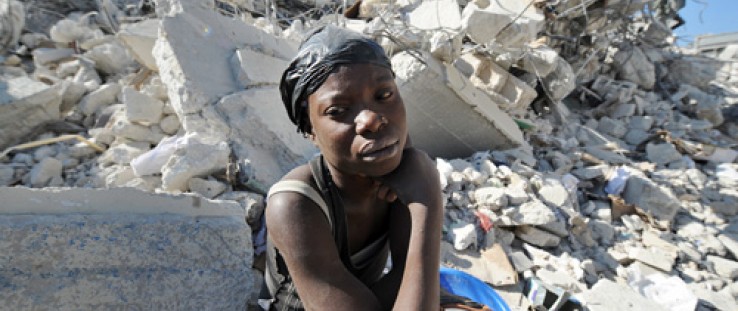 A Haitian woman rests on the rubble of a destroyed building at a market in Port-au-Prince following a massive 7.0-magnitude quake in January 2010.
Jewel Samad, AFP
A Haitian woman rests on the rubble of a destroyed building at a market in Port-au-Prince following a massive 7.0-magnitude quake in January 2010.
Jewel Samad, AFP
 A Haitian woman rests on the rubble of a destroyed building at a market in Port-au-Prince following a massive 7.0-magnitude quake in January 2010.
Jewel Samad, AFP
A Haitian woman rests on the rubble of a destroyed building at a market in Port-au-Prince following a massive 7.0-magnitude quake in January 2010.
Jewel Samad, AFP
Just after 4:53 p.m. on Jan. 12, 2010, nearly everything in the Haiti earthquake zone crumbled and froze. Grocery shoppers pinned under supermarket shelves. Bureaucrats wedged in front of their computers. Students powerless to wriggle out of their school chairs. Street vendors felled by chunks of buildings.
In the hours and days after the Haitian earthquake that would later be called unprecedented in its reach and destruction, USAID poured staffers and millions of dollars into a full-on response to help save lives and alleviate suffering of the Haitian people.
"You look at the initial week to two weeks," said Tim Callaghan, the senior regional adviser for the Office of U.S. Foreign Disaster Assistance for the Latin America and Caribbean region. "You had rescue workers funded by USAID as part of the DART [Disaster Assistance Response Team] team on the ground within 22 hours. "That's the way it should be. That's what was needed."
The earthquake's epicenter was about 16 miles west of Port-au-Prince, close to the town of Leogane, which lost over 90 percent of its buildings, but the damage stretched to the Haitian capital and beyond. With lax or nonexistent building codes, Haiti's poorly constructed concrete structures collapsed and turned to rubble or became unstable and uninhabitable. Minutes after the quake, dust clouds shrouded Port-au-Prince and survivors.
When the dust settled, there was destruction and mayhem. More than 230,000 were killed immediately or shortly after the quake—many left lying on city streets while officials began digging mass graves. On the nearby coast of the island nation, houses were consumed by the sea with only their roofs remaining above the waves.
As many as 300,000 people suffered injuries, some life-altering. More than 1 million were immediately homeless. Most survivors were haunted by what they saw and felt—aftershocks continued for weeks.
The earthquake caused $7.8 billion in damages and losses, and predictions are that it will take Haiti years, if not decades, to recover and "build back better."
"The Haiti earthquake is the largest disaster in the western hemisphere. In no one's recollection do you have a capital city brought to its knees," said Paul Weisenfeld, the first coordinator of the Haiti Task Team and a deputy assistant administrator in the Bureau for Latin America and the Caribbean.
All of this came just four days after Administrator Rajiv Shah was formally sworn in to the top job at USAID, at which time he delivered a hopeful speech outlining a vision of reform for the Agency. Carleene Dei, the new Haiti mission director, had arrived just 24 hours before the quake.
USAID Called to Lead
Soon, though, the earthquake response would become their primary focus. President Barack Obama called on USAID—and Shah—to lead the coordinated U.S. response to the quake. The response became the United States' largest international humanitarian response to a natural disaster.
Unlike a hurricane or a flood, said Callaghan, there is no warning for earthquakes and no time to prepare. "Speed is critical," he said.
"You have mechanisms in place to move people into place. I believe that so many of the systems we have in place allowed us to be responsive," he said. "I firmly believe that the U.S. government has the capability to adequately respond and support any government" dealing with a catastrophic natural disaster.
Hours after the quake, USAID flew in urban search and rescue teams to help rescue survivors trapped in the rubble. At the height of the effort, the teams included 500 personnel who worked nearly around the clock as part of a massive international effort to free people from crumbled buildings, saving more than 130 lives.
Following the quake, the international community distributed food to more than 3.5 million people—the largest emergency urban food distribution system ever, and provided shelter to 1.5 million. Six months later, approximately 1 million people had been immunized against highly communicable diseases such as polio and measles.
In Haiti, USAID staff were not untouched—both Haitian and American staff lost close friends and family members. Staff who were not attending to family, or evacuated, worked tirelessly through 20-hour workdays, with surge staff called in from around the globe. Most slept on the embassy floor or in tents on the compound.
"We were lucky because our building stood," said Weisenfeld, adding that mission staff "dropped 50 percent just when the workload grew 1,000 percent."
The United Nations' Haiti headquarters collapsed, as well as buildings that housed Haiti's national ministries, taking with them hundreds of civil servants and international aid workers who would have played key roles in directing the disaster response.
In Washington, USAID officials activated a Response Management Team, or RMT, on the top floor of the Agency where USAID and other U.S. government workers—from the Departments of Agriculture, Commerce, Defense, and Health and Human Services, as well as the Federal Emergency Management Agency—also worked around the clock on the response.
"The task team formed when there was still an RMT," Weisenfeld said. The plan was to focus on forward-leaning events, preparing for the transition from emergency aid to long-term development. "In theory, starting to think about reconstruction planning," he explained.
Disaster, Unprecedented
In reality, the task team was consumed with the immediate problems on the ground. The disaster simply was unprecedented.
"The problem is there is no fair comparison," said Weisenfeld, who has worked on other disaster responses at USAID, including the 2007 earthquake in Peru.
Added Callaghan, a 25-year development/disaster response veteran of the region: "This is a tremendously challenging environment. We have four events that took place here in one calendar year"—the earthquake, Hurricane Tomas, a cholera outbreak, and now a disputed election.
All told, the U.S. government spent more than $1 billion in Haiti in 2010, mostly on the earthquake and its aftermath, but also on storm and election preparations, and now cholera.
What worked well?
"If you think back, the initial fears were wide-scale unrest, massive disease … massive death from storms and hurricanes. All of that was avoided and it was all because of international assistance," Weisenfeld said.
While the Agency focused on providing basic necessities—water, food, and shelter—it also fielded many other issues, including security, particularly in the context of food distribution. "I'm also proud that the USAID response was addressing so many issues at the same time," Callaghan said.
USAID is providing safe shelter to thousands by fixing repairable houses and constructing transitional shelters on cleared lots. To clear the way for reconstruction, USAID has paid for removal of more than 15 percent of the estimated 10 million cubic meters of rubble. The Agency also helped clear debris from canals to mitigate the effects of the 2010 rain and tropical storm seasons, which run from April through November.
Unfinished Business
Officials agree, however, the job is nowhere near complete.
USAID will use lessons learned from this disaster to perform better in the next, honing in on better coordination of international and U.S. government responses to such disasters.
In spite of some criticism that would follow in the early weeks after the earthquake, Callaghan said he is proud of the USAID response to the crisis.
"I always look at two things that drive me," he says. The first: "To help people when things are difficult. I always think of the America taxpayers as well. I think the American people can feel proud of the response, especially the search and rescue."
Back in Haiti a year after the earthquake, Callaghan's team is now focused on cholera. Still, he reflected on the magnitude of the crisis, the heroics he witnessed during dramatic rescues, and the emotions of the family members of missing Americans whom he spoke with in daily telephone calls during the immediate aftermath of the quake and met in person as they held vigil at the Hotel Montana and other sites.
"It was a day of remembrance," he said of Jan. 12, 2011. "And certainly for us who worked the event, a tear was shed at 4:53."







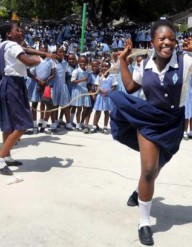

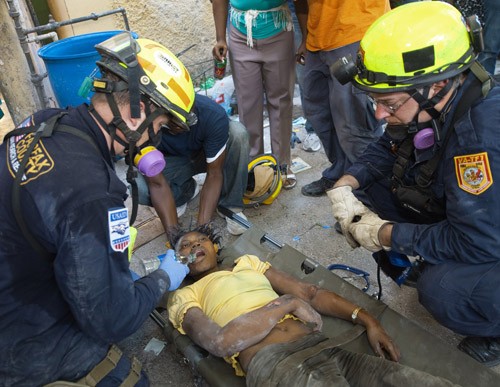
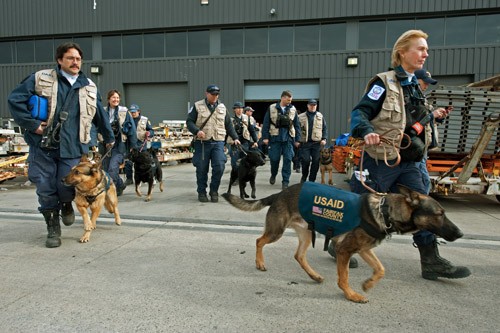
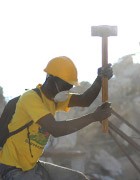

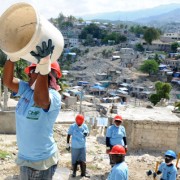
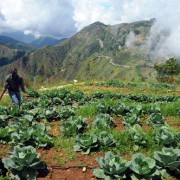
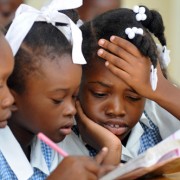
Comment
Make a general inquiry or suggest an improvement.